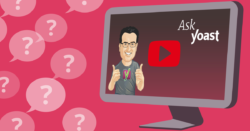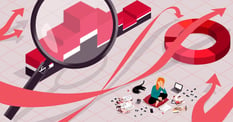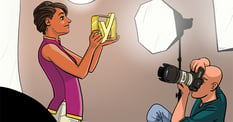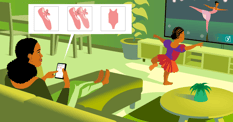Hiding images for Pinterest in your posts
Pinterest is a pretty popular platform these days. It’s basically a search engine, with a social aspect. So, making your images appealing for sharing on Pinterest can be a great idea. And not just if you have a mom-blog or DIY site! If you use Pinterest right, it can help you drive more traffic to your site, put your products in the spotlight, or gain more visibility for your business.
Before we dive in, if you want to learn more about image SEO and other essential SEO skills, you should check out our All-around SEO training! It doesn’t just tell you about SEO: it makes sure you know how to put these skills into actual practice!!
Pinterest images often have a specific ‘look’. Tall images are most compatible with the way the Pinterest feed is designed. Some text in the image can also work well, to get people’s attention and give them an idea of where the image will lead them. While an image like this is well-suited for Pinterest, you probably don’t want to put it on your website like that. But you still want to provide people who pin your image straight from your post with a good Pinterest image. So, what to do? There are ways to use HTML code to hide a Pinterest image ‘underneath’ the regular images in your post. That way, people get the tall Pinterest image when they pin from your post. But, what does Google think about such practices?
Blake Score emailed us her question on the subject:
What is your opinion about hiding Pinterest sized images in your post with HTML code? Doing this makes for a strong pin when people pin to Pinterest straight from your post. It seems to work from a Pinterest SEO perspective, but what does Google think?
Watch the video or read the transcript for the answer!
Hiding Pinterest images in your post
“I honestly don’t think Google minds as much, but I hate all the hacks I’m seeing around how people get their proper pages on Pinterest. So, we are currently talking to Pinterest about improving that entire workflow. About maybe allowing for specific meta tags for Pinterest, so that we can just put an image like that in a meta-tag and not have to put it hidden in a page, which is a dirty hack and can always lead to problems in the long run.
So, for now it works. Keep doing it because it’s worth the traffic. In the long run, I hope we’ll come up with a better solution. Good luck.”
Read more: How to promote your products and earn money on Pinterest »
Ask Yoast series
 See more from the Ask Yoast series
See more from the Ask Yoast series
In the Ask Yoast series, we answered SEO questions from our readers. Check out the other questions!




If some one wishes expert view about running a blog after that i suggest him/her to go to see
this webpage, Keep up the good work.
Hi there. I just wanted to say that I love Yoast. I am still on the learning orbit (there is way too much for a curve. I hope to catch up with most of what I need someday. Keep up the good work, it is really appreciated.
Jim
Interesting article. Pinterest is important for my traffic so I always include a made for Pinterest graphic at the end of my blog content specific to that article. It’s not ideal but it’s almost always the one that gets pinned.
Thanks for another insightful video Joost, It will be interesting to see what solution you guys come up with. As I see hiding the Pinterest size image getting abused in the future by spammers.
It would be AMAZING if we could simply add an image (or — even better! — images!) in a meta tag. I get about half of my traffic from Pinterest, and hiding images is so tedious. At least I don’t have to worry about Google dinging my site for doing it! Thanks guys!
Pinterest intrigues me but it seems our existing clients don’t use it that much so I hadn’t even thought of this hack. “Wow, I could have had a V-8!”
I have to say, the header graphics for your blog posts are just great! Who comes up with this stuff?? I mean, this military-strategy table with three figures, sleeves rolled up. Genius! The choice of logos to display for the moveable pieces. I was curious about the choice of the Behance logo on the battle map. I expect someone says, “article topic is this, keywords will be _, we need a graphic that captures the story.” This happens several times a day. I’d love to read (or see) more about the team behind the header graphics. Tell us more!
Why not just specify the image url in the media parameter on your Pin link? For example:
https://pinterest.com/pin/create/button/?url=https%3A//example.com/post/&media=https%3A//example.com/images/filename.jpg
Pinterest was a puzzle for me. What it exactly does and how it works, Thanks for sharing things in an easy way…